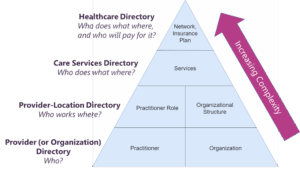The following is a guest article by Tomas Gorny, Co-Founder and CEO at Nextiva
Across the health and medical industries, organizations of all kinds are looking to tap into the potential of agentic AI. For an industry long accused of being slow to adopt new technologies, it makes sense to want to move more quickly and be at the forefront. But if healthcare organizations rush, they run the risk of putting the proverbial cart before the horse.
Nextiva defines agentic AI as “an advanced level of artificial intelligence automation that adapts to new data and learns on its own. It operates autonomously and executes tasks based on real-world data. The requirement for human intervention is minimal. These tools can take initiative, make decisions, and carry out complex sequences of actions without human guidance.”
The potential uses in healthcare are myriad. A new study in the journal Informatics and Health explores several of them. “These systems enhance various aspects of healthcare, including diagnostics, clinical decision support, treatment planning, patient monitoring, administrative operations, drug discovery, and robotic-assisted surgery,” writes Nalan Karunanayake of the Department of Radiology at New York City’s Memorial Sloan Kettering Cancer Center. “Powered by multimodal AI, agentic systems integrate diverse data sources, iteratively refine outputs, and leverage vast knowledge bases to deliver context-aware, patient-centric care with heightened precision and reduced error rates.”
There are, of course, also numerous issues of concern, including the need to ensure that human healthcare professionals oversee all decisions and ensure privacy and compliance.
But there’s another challenge getting less attention: the need to end information siloes.
Unified Interactions
AI can only make recommendations and suggestions based on the information it has. This is true in every industry, as these tools work to suggest the best ways of delivering results for customers. It’s especially crucial in healthcare, where the customers are patients. All of agentic AI’s processing power isn’t helpful unless it knows as much as possible about each patient.
People’s everyday experiences show them that their providers don’t seem to share important information. When they go to an eye doctor, dentist, general practitioner, specialist, or clinic, they often have to start from scratch. Even as electronic health records (EHRs) have become the norm, the industry has not yet achieved a widespread system of unifying patient information into a single record.
Some institutions are working to change this by taking on Unified Customer Experience Management platforms (UCXMs) — which, in healthcare, can also be called Unified Patient Experience Management platforms (UPEMs). These kinds of technologies “provide tools for data normalization, cleansing, and transformation, ensuring that data from different sources can be seamlessly integrated and analyzed,” a study in the World Journal of Advanced Research and Reviews explained.
In addition to pulling together information from as many relevant sources as possible, these systems must also update records in real time. When results of diagnostic tests come in, doctors or nurses spot new problems or positive responses to interventions, or a patient experiences any kind of pertinent change in their condition, this information should show up in the record. In fact, remote patient monitoring technologies should tie into these same systems when feasible, automatically uploading their latest findings.
Of course, there are challenges in carrying out this kind of change. It can seem like a daunting task. But it’s more than worth it. In addition to allowing AI agents to do a much better job, a UCXM or UPEM brings a wide array of other benefits. These systems make it much easier for people to schedule appointments, get answers to relatively simple queries, and more. Customer satisfaction scores go up, and back office personnel are relieved of some administrative tasks.
Working with healthcare organizations, I’m already seeing results. And for healthcare providers, it’s a chance to do a better job than ever at what they’re committed to: saving and improving lives, and building a healthier society.
 About Tomas Gorny
About Tomas Gorny
Tomas Gorny is the Co-Founder and CEO at Nextiva, a unified customer experience management platform empowering businesses with the best tools to help them grow fearlessly. An award-winning entrepreneur, he is committed to helping set up businesses for success with powerful and intuitive technologies. He and his team work with businesses across numerous industries, including healthcare. Tomas is also a philanthropist, carrying out a range of projects through both Nextiva Cares and the Gorny Foundation.



